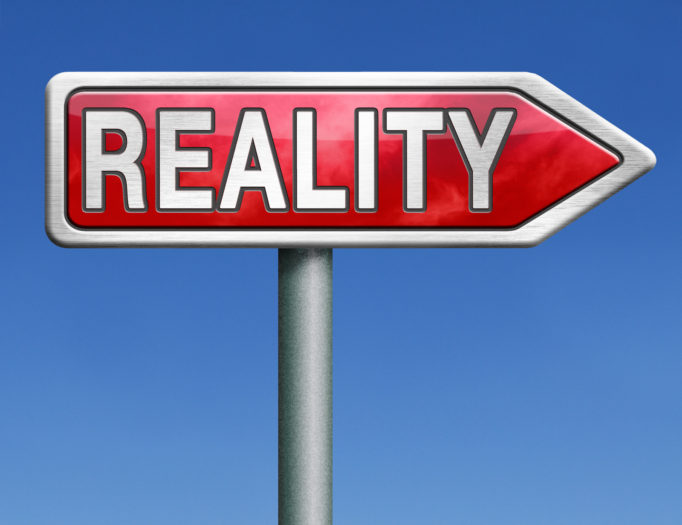Published in the Nikkei Asian Review 1/12/2015
“In the latest blow to Prime Minister Shinzo Abe, Japan slid back into recession in the third quarter of the year…”
Such was the standard wording in many media reports of Japan’s latest gross domestic product figures. An alternative and probably better way to summarize the same information would have been as follows.
“In another success for Prime Minister Shinzo Abe, Japanese GDP recorded its strongest sequence of growth in 22 years…”
Both statements are true. The first widely-reported version relates to “real” GDP, which has been adjusted for inflation and seasonality, then compared with the previous three months. The rate of change is then “annualized” — in other words, assumed to last an entire year.
If this sounds complicated, that is because it is. By contrast, the second version is based on the raw “nominal” GDP for the July-to-September quarter, compared with same period of the previous year. No adjustments are necessary.
A recent Financial Times article noted that Japan’s low natural rate of growth — caused in part by a gently decreasing population, as opposed to the immigration-driven increases in other developed countries — means that technical recessions, defined as two consecutive quarters of declining real GDP, are certain to be more frequent in Japan than elsewhere. In the case of the U.S. and the U.K., for example, population growth is 0.6-0.7% per year, which means GDP growth of the same amount is needed to prevent living standards from falling. For Japan any growth at all constitutes an improvement.
At the best of times there is plenty of unreality about “real” GDP, with its multiplicity of statistical assumptions and tendency to be revised repeatedly, sometimes a year or more after the original release. The inflation adjustments cannot be faithful measures of the changes in price and quality for the products and services in a complex modern economy. Overstating inflation (or understating deflation) causes growth in “real” GDP to look lower than it really is; understating inflation (or overstating deflation) has the opposite effect. Annualizing the quarter-on-quarter growth simply magnifies any inaccuracies.
REAL FICTION AND NOMINAL REALITY
In contrast the nominal GDP numbers are closer to the lived reality of revenues booked, wages earned and bills paid. In the case of Japan’s economy during the July-to-September quarter, conditions did not feel particularly weak. Tax revenues were up 17% year-on-year, convenience store sales up 5% and the labour market was at its tightest since 1992.
More to the point, the goal of Japanese policy is to reflate the economy after twenty 20 years of deflationary stagnation. During that period “real” GDP continued to grow, albeit at a slow pace. Focussing on that picture, as most economists do, you might wonder what the gloom and doom concerning the “lost decades” was all about. But nominal GDP gives a truer picture of an ugly economic landscape in which wages fell, tax revenues nearly halved and plummeting asset prices helped to ignite two banking crises.
Prime Minister Shinzo Abe and his team appreciate the difference. In September he took the unprecedented step of announcing a target for nominal GDP. The number he is ’s shooting for is Yen 600 trillion yen, a rise of roughly one fifth – though, wisely, he was vague about the timing. If growth were to continue on the trajectory seen in the latest GDP release, the target would be reached hit sometime early in the next decade.
Interestingly in the Alice-in-Wonderland world of Chinese government statistics, nominal GDP has experienced a much more severe slowdown than the closely watched real GDP number. Whereas real GDP growth has fallen by just three percentage points in the past five years, nominal GDP growth has fallen by a whopping twelve percentage points. If the global economy slides into recession while deflationary risks remain substantial, other countries, including China, may follow Abe’s lead in introducing some sort of nominal GDP target.
SEX AND DRUGS AND ECONOMICS
The statistical creation known as GDP first appeared on the scene in the 1930s and its dominant position as measure of economic performance is a post-war phenomenon. In recent years several alternatives have been proposed. Variations such as Bhutan’s “Gross National Happiness” are well-intended but vain attempts to quantify the unquantifiable. Nonetheless they do highlight flaws in the original. GDP takes no account of the quality of the economic activity it comprehends, either in terms of sustainability or social value.
The absurdity of fetishizing GDP reached its peak in 1987 when Italy decided to incorporate estimates of its shadow economy in the measure, thereby instantly bulking out its economic scale by 20%. More recently new European guidelines have resulted in countries such as the UK and France adding a few extra percent to their GDPs by including drug-dealing, prostitution and smuggling.
As Britain’s Institute for Economic Affairs points out, rising taxes are a key driver of shadow economies, as the incentive grows to keep commercial activities hidden. from view. If Japan raises taxes to European levels, it can expect its shadow economy also to grow to European proportions – which the IEA estimates as 14% of GDP even for the supposedly honest Scandinavian countries. That would constitute a “fourth arrow” that Japan surely doesn’t need.
The bottom line is that when you are trying to reflate an economy, real GDP can be really misleading. And as a measure of economic health GDP growth is not the gold standard, but a statistical construct that should be treated with the scepticism due all attempts to capture living, breathing human activity in a single number.
